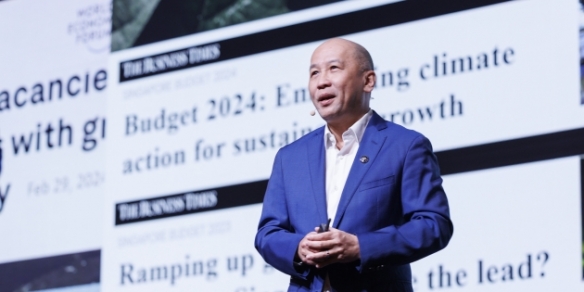About 35% of A&P budget at MAS goes to digital
By A. Asohan July 8, 2013
- Grand old dame shows the whippersnappers how it’s done at Google event
- No set allocation for digital; every campaign addressed individually
 THERE have been many reports, including one by McKinsey that was commissioned by Google Inc, that portray a terrible imbalance between the amount of time Malaysians spend online versus the amount of advertising and promotion dollars the online medium gets – 5% of the total, according to that study.
THERE have been many reports, including one by McKinsey that was commissioned by Google Inc, that portray a terrible imbalance between the amount of time Malaysians spend online versus the amount of advertising and promotion dollars the online medium gets – 5% of the total, according to that study.
Still, many in the digital advertising and marketing space believe that this imbalance is gradually being corrected, especially as more online and new media businesses take off in the country. The last thing you would expect, though, is a traditional, old-school business to be riding that wave.
“About 35% of our total advertising and promotions (A&P) budget typically goes to digital,” says Khairul Syahar Khalid (pic), A&P head at Malaysia Airlines, although he declines to say how much the national carrier spends in total.
“People have often asked me how much we allocate for digital; but we don’t,” he adds. “Every campaign has to be addressed individually – you have to have a holistic approach and look at all the component of a particular campaign; then decide how much to spend on these various components depending on the campaign objectives and whom you’re trying to reach out to.”
Syahar was a speaker and panellist at a recent ‘Think with Google’ event in Kuala Lumpur, which gathered marketers and consultants to discuss ways brands can reach out to consumers; he also spoke to the media at a press conference after the event.
“You don’t have to be a techie to understand the value of digital,” he says. “We’ve got enough data telling us about how our customers are spending more time in the digital space – but we as marketers need to take that big step to be where our customers are.”
“It’s not about how many impressions, clicks, likes or shares you get; it’s about getting consumers to love your brand and interact with it, and most importantly, driving business performance,” he adds.
Some of the statistics Syahar shares are from Nielsen, including one telling datum: Malaysians spend an average of 40.5 hours per week online, versus 4.3 hours reading the newspapers or 10 hours watching television; yet the bulk of advertising expenditure adex still goes to the traditional media.
Citing other studies, he says 76% of travellers make their plans online; 57% access the mobile Internet for travel information; and 66% watch online videos.
In Malaysia Airlines’ view, the typical consumer ‘path for travel’ goes through five stages: They first dream about it; then do research to find out more about their desired destination and to find the best travel and accommodation deals; make their bookings; experience the travel; and finally share their experience.
In just about every phase, digital can play a cost-effective role – especially in the research, booking and sharing phases.
But digital is not a single channel either, Syahar cautions. “You have to be on every screen – from mobile to smart TVs and displays; to video and social media,” he says. “Malaysia Airlines has been spending a lot on search since 2008, but we also have these other key platforms.”
Syahar says that the typical Malaysia Airlines digital campaign would have different phases, in which different platforms are harnessed. For example, one major campaign would come around the time of the Matta travel fair, which may begin with a “traditional blast-out” with banner ads on high-traffic sites, but will then involve other activities using social media and online video.
“The bulk of our marketing spend at the most recent Matta fair was in fact on digital, for a 20-day campaign,” he says. “Our target was to increase our online bookings by 50% over the take from last year’s fair – and we more than doubled our target.”
“Every year, at the fair, about 70% of our bookings come from traditional channels, predominantly travel agents; but at this year’s fair, it was a 50-50 split,” he adds.

Meanwhile, Nimal Manuel, partner at McKinsey & Company, notes that you get more bang for the buck in traditional media when it comes to building brand awareness. “However, digital is better for conversion.
“If you have a limited spend, then it should be all digital,” he adds.
Simon Kahn (pic), chief marketing officer at Google Asia Pacific, concurs and adds a different argument. “Because of its lower costs, you can afford to be more exciting or quirky in a digital campaign, as opposed to doing the same with running an advertising campaign on TV.”
“There’s more space for failure,” he adds.
Related Stories:
Digital marketing expected to exceed RM450m for 2012
Effective Measure out to shift digital marketing conversations
Marketers still struggling with mobile
Meltwater amps up Buzz 3.0 for social media marketers
Analyst bullish on Catcha Media despite rocky start to year
For more technology news and the latest updates, follow @dnewsasia on Twitter or Like us on Facebook.


